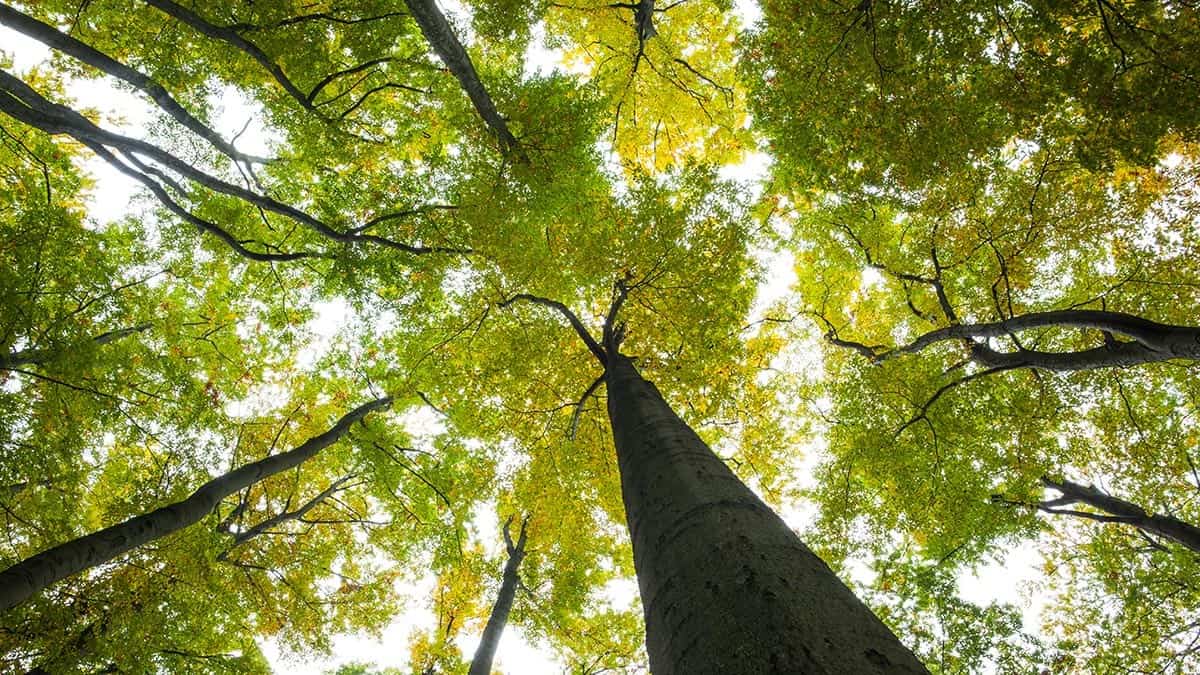
A family of organic compounds released by trees could play a far greater role in cloud formation than previously thought. That is the conclusion of Lubna Dada at Switzerland’s Paul Scherrer Institute and an international team, who say that their insights could play a crucial role in predicting the future of Earth’s climate.
When trees come under stress, they release organic molecules that react with ozone, nitrate radicals and other compounds in the atmosphere. These reactions create tiny solid particles called ultra-low-volatility organic compounds (ULVOCs).
In some cases, ULVOCs can grow large enough for water droplets to condense on their surfaces, encouraging cloud formation. Clouds have significant effects on Earth’s climate – many of which are poorly understood. Therefore, understanding the influence of ULVOCs cannot be overlooked in global climate models.
The most important molecules involved in ULVOC formation are in three types of hydrocarbon called isoprene, monoterpene, and sesquiterpene. To complicate matters, scientists believe climate change is now altering their emission into the atmosphere.
Increasing concentration
“The concentration of terpenes is increasing because plants release more of them when they experience stress – for example when there is an increase in temperatures and extreme weather conditions and vegetation is more frequently exposed to droughts,” Dada explains.
Through previous research, climate scientists now have a solid understanding of how increasing levels of isoprene and monoterpene are affecting global cloud formation – helping them to make better predictions about the future of Earth’s climate.
So far, the role of sesquiterpenes has proven far harder to pin down. “This is because they are quite difficult to measure,” says Dada. “Firstly because they react very quickly with ozone, and secondly because they occur much less frequently than the other substances.”
Despite their lower emission, these molecules are more likely than isoprene and monoterpene to form the large particles necessary for cloud formation. Ultimately, this means that a deeper understanding of sesquiterpene’s cloud-forming role will be crucial to improving our models of Earth’s climate.
Cloudy at CERN
In their study, Dada’s team explored the ability of sesquiterpenes to form ULVOCs using the Cosmics Leaving Outdoor Droplets (CLOUD) chamber at CERN in Geneva. There, the researchers can simulate different atmospheric conditions that are involved in cloud formation.
“At almost 30 m3, this sealed climate chamber is the purest of its kind worldwide. It is so pure that it allows us to study sesquiterpenes even at the low concentrations recorded in the atmosphere,” Dada explains.
Starting with a mixture of only isoprene and monoterpene, the team measured how rates of cloud formation changed inside the chamber as the concentration of sesquiterpene was increased. The effect was immediate. Even when sesquiterpene composed just 2% of the mixture inside the CLOUD chamber, its increased yield of ULVOCs had already doubled the cloud formation rate.

Plastic aerosols in the atmosphere could affect the climate
As Dada explains, “This can be explained by the fact that a sesquiterpene molecule consists of 15 carbon atoms, while monoterpenes consist of only ten and isoprenes only five.” With its higher molecular weight, sesquiterpene is far less volatile still than the other two molecules, allowing it to coalesce more readily into solid particles.
The results show that the cloud-forming influence of sesquiterpenes must be included in future global climate models. Dada and colleagues hope that their study will allow climate scientists to make better predictions of how cloud formation and its impact on Earth’s atmosphere will change as the planet continues to heat.
Building on their techniques, the researchers will now aim to gain a broader picture of how the climate has already been impacted by emissions of other manmade compounds. “Next, we and our CLOUD partners want to investigate what exactly happened during industrialization,” explains team member, Imad El Haddad. “At this time, the natural atmosphere became increasingly mixed with anthropogenic gases such as sulphur dioxide, ammonia and other anthropogenic organic compounds.”
The research is described in Science Advances.
